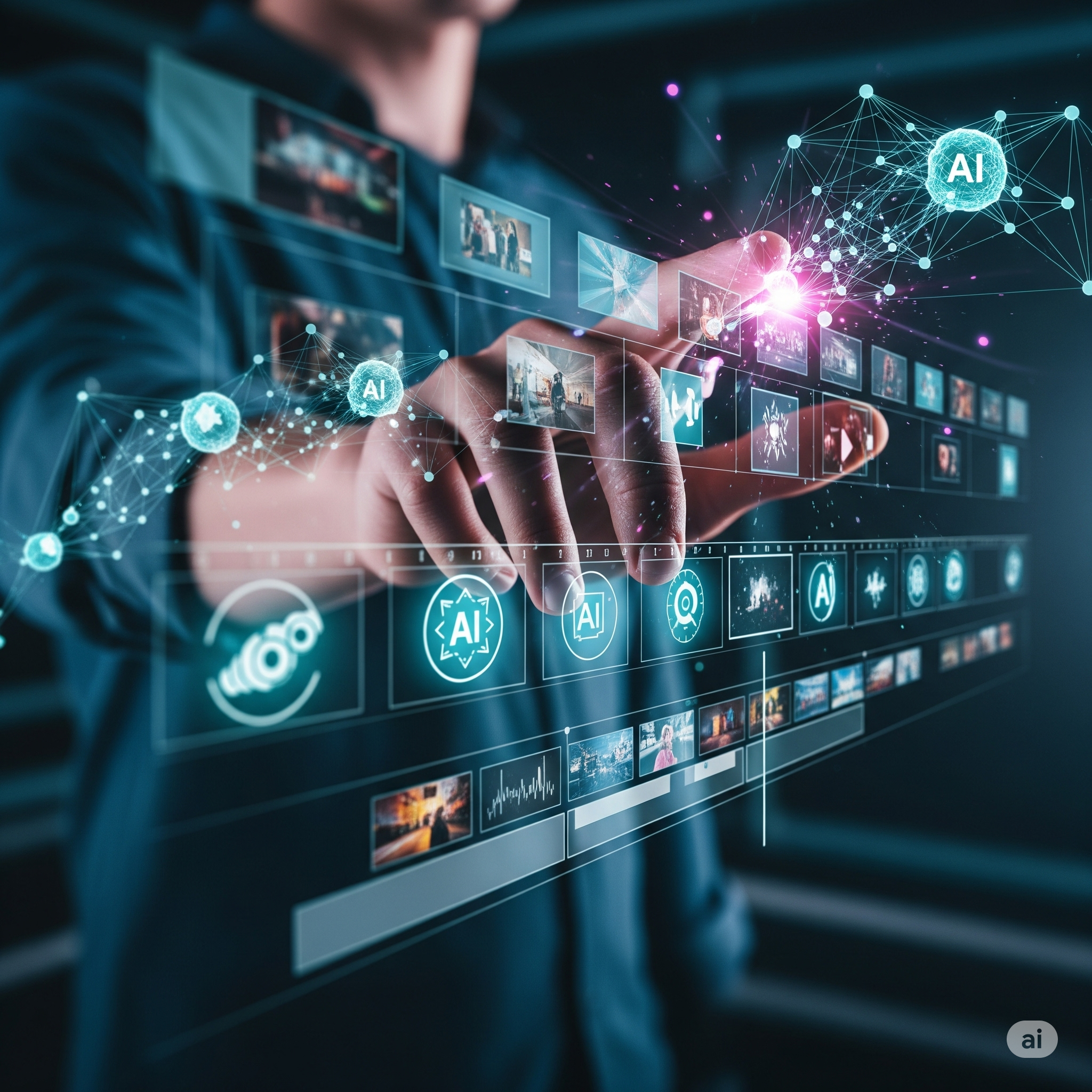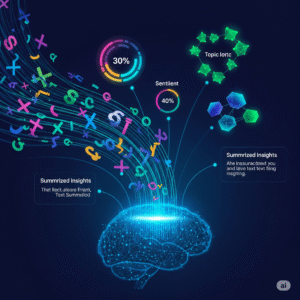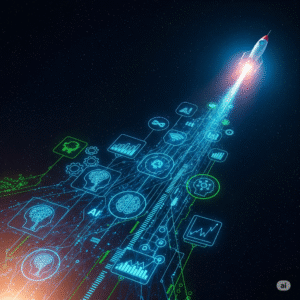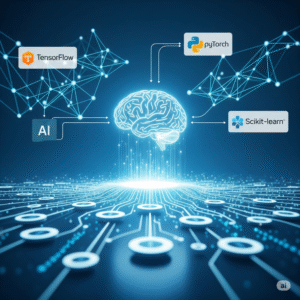In the dynamic world of visual content, where captivating videos dominate everything from social media feeds to blockbuster films, the demand for efficiency and innovation has never been higher. Enter Artificial Intelligence. What was once a meticulous, time-consuming process involving countless hours of manual labor in post-production is now being revolutionized by intelligent algorithms. AI video production is no longer a distant dream; it’s a powerful reality that’s transforming how stories are told, how brands connect with their audiences, and how businesses extract value from their visual assets. This isn’t about AI replacing human creativity, but rather about empowering creators with unparalleled tools that streamline workflows, unlock new creative possibilities, and accelerate the entire video lifecycle.
The synergy between human artistic vision and algorithmic precision is reshaping the landscape of video creation, making high-quality production more accessible and efficient than ever before. From automatically generating rough cuts to crafting mind-bending special effects, AI’s footprint in the visual storytelling realm is expanding at an astonishing pace. This blog post will delve into the profound impact of AI video production and its close cousin, AI film editing, exploring how these technologies are not just transforming the artistic process, but also creating new business opportunities and driving profit across diverse sectors.
Beyond the Cut: Understanding AI Video Production
At its core, AI video production leverages artificial intelligence to automate, enhance, and even generate various aspects of video creation. This encompasses everything from pre-production tasks like script analysis and shot planning to the intricate processes of post-production, including editing, color grading, and special effects. The AI learns from vast datasets of existing video content, recognizing patterns in visual storytelling, character movements, speech, and even emotional cues. Once trained, it can then perform tasks that would traditionally require significant human intervention, often with greater speed and consistency.
This technological marvel is powered by sophisticated machine learning models, notably computer vision for analyzing visual data, natural language processing (NLP) for understanding scripts and dialogue, and generative AI for creating new visual elements or entire video sequences. For instance, AI algorithms can automatically detect scene changes, identify key objects or faces, transcribe audio into text, and even suggest optimal cuts based on pacing and narrative flow. The immense advantage of AI video production lies in its capacity to process vast amounts of data rapidly, allowing for quick iterations, personalized content at scale, and a dramatic reduction in production timelines and costs.
The Art of Precision: How AI Transforms Film Editing
Within the broader scope of AI video production, AI film editing stands out as a particularly impactful application. Imagine an AI that can listen to your dialogue and automatically remove filler words, or one that can track a subject’s face and keep it perfectly framed across multiple shots. These are just a few examples of how AI is refining the traditionally tedious and time-consuming aspects of post-production.
AI-powered features are being integrated into leading non-linear editing (NLE) software, offering intelligent assistance for tasks like:
- Automated Rough Cuts: AI can analyze footage and generate initial edits based on spoken dialogue, visual cues, or pre-defined templates, providing a solid starting point for human editors.
- Intelligent Content Organization: AI can tag and categorize footage based on content, emotion, or action, making it incredibly easy to find specific clips within large libraries.
- Speech-to-Text Transcription and Editing: Tools can transcribe entire videos, allowing editors to cut, reorder, and refine video simply by editing the text transcript. This also enables rapid subtitle generation.
- Color Correction and Grading: AI can analyze footage and suggest optimal color corrections, match color palettes across different scenes, or even apply specific cinematic looks with a single click.
- Noise Reduction and Audio Enhancement: AI algorithms can effectively remove background noise, improve voice clarity, and balance audio levels, ensuring a professional sound.
- Smart Cropping and Reframing: For different aspect ratios (e.g., horizontal for YouTube, vertical for TikTok), AI can intelligently reframe shots to keep the main subject in focus.
These capabilities allow AI film editing to drastically cut down on mundane tasks, freeing up human editors to focus on the creative nuances, storytelling, and artistic decisions that truly differentiate a video. The result is often a higher-quality, more polished final product delivered in a fraction of the time.
Business at the Speed of Light: AI Driving Profit in Video
The implications of AI video production extend far beyond the realm of traditional filmmaking. Businesses across diverse industries are leveraging these technologies to gain a significant competitive advantage, make data-driven decisions, and ultimately boost their bottom line.
Consider the explosion of video content in digital marketing. From product demos to social media ads, companies need to produce vast quantities of engaging video tailored to specific audiences and platforms. AI offers an unparalleled solution for personalization and scalability. Marketing teams can use AI to generate hundreds or even thousands of personalized video ads, dynamically adjusting content, voiceovers, and visuals based on individual viewer data. This hyper-targeted approach leads to significantly higher engagement rates, conversion rates, and ultimately, increased revenue.
Beyond marketing, AI is revolutionizing internal communications, e-learning, and customer support. Imagine quickly transforming long training manuals into engaging video tutorials with AI-generated avatars, or instantly localizing marketing videos for global audiences with automated translation and dubbing. These applications directly reduce operational costs, improve training effectiveness, and enhance customer satisfaction, all contributing to business growth and profitability.
Case Study 1: Scaling Personalized Video Marketing with AI Avatars
Meet “InnovateConnect,” a rapidly growing e-commerce brand that specializes in tech gadgets. Their marketing team faced a significant challenge: how to create personalized video ads for thousands of different products and customer segments without incurring astronomical production costs. Traditional video shoots for each product variation were simply not feasible.
InnovateConnect turned to Synthesia (https://www.synthesia.io/), an AI video generation platform that creates realistic AI avatars from text. By simply inputting product descriptions, customer pain points, and target demographics into Synthesia, InnovateConnect’s marketing team could generate professional-looking video ads featuring AI-powered presenters. These avatars could speak in multiple languages and with various accents, automatically syncing their lip movements to the generated script.
“Before Synthesia, creating personalized video content at scale was a pipe dream,” says Maya Sharma, Head of Marketing at InnovateConnect. “Now, we can launch highly targeted video campaigns for individual product lines, localized for different markets, in a matter of hours, not weeks. This has led to a 35% increase in click-through rates on our video ads and a substantial reduction in our overall marketing expenditure. It’s transformed our ability to connect with customers on a deeper, more personal level.”
Case Study 2: Accelerating Post-Production for a Leading Media Agency
“Global Content Hub” is a prominent media agency that produces a high volume of corporate videos, documentaries, and social media content for its diverse clientele. Their post-production team was constantly battling tight deadlines and the sheer volume of raw footage, often spending countless hours on mundane tasks like logging, transcribing, and initial rough cuts.
To address these bottlenecks, Global Content Hub implemented Descript (https://www.descript.com/), an all-in-one audio and video editing tool that integrates powerful AI features. Descript’s core functionality allows users to edit video by simply editing its automatically generated transcript. This meant their editors could swiftly remove pauses, filler words, and irrelevant sections by deleting text, with the video clips adjusting automatically. They also leveraged Descript’s AI-powered “Studio Sound” to enhance audio quality and its “Eye Contact” feature to correct gaze in talking-head videos.
“Descript has been a game-changer for our post-production workflow,” states David Lee, Senior Editor at Global Content Hub. “The ability to edit video like a document has cut down our rough cut time by almost 50%. We’re able to deliver projects faster, take on more clients, and our editors can focus on the creative storytelling rather than tedious manual work. It’s a clear demonstration of how AI film editing can directly impact our efficiency and client satisfaction.”
Essential AI Tools for Video Production and Editing
The market for AI-powered video tools is booming, offering solutions for every stage of the production pipeline. Here are some notable examples:
- Adobe Premiere Pro (Sensei AI): (https://www.adobe.com/products/premiere/ai-video-editing.html) Adobe’s Sensei AI engine is deeply integrated into Premiere Pro, offering features like Auto Reframe (for adapting aspect ratios), Remix (for intelligently re-timing music), Speech-to-Text (for automated transcription and captioning), and enhanced color matching.
- RunwayML: (https://runwayml.com/) A cutting-edge platform offering a vast array of generative AI tools for video. It allows users to create video from text, image, or existing video, perform tasks like background removal, object removal (inpainting), and motion tracking with remarkable ease. Runway is at the forefront of AI special effects.
- Descript: (https://www.descript.com/) As highlighted in the case study, Descript revolutionizes editing by letting users edit video and audio by editing the automatically generated transcript. It also includes features like Studio Sound for audio enhancement and Eye Contact for gaze correction.
- VEED.IO: (https://www.veed.io/) A comprehensive online video editing suite with robust AI features including automatic subtitles, background noise removal, text-to-video capabilities, AI avatars, and a “Magic Cut” feature for quick edits.
- Opus Clip: (https://www.opus.pro/) Specializes in transforming long-form videos into viral short clips for social media. It uses AI to identify engaging moments, add captions, and automatically reframe content, significantly streamlining content repurposing.
- Topaz Video AI: (https://www.topazlabs.com/topaz-video-ai) Focuses on enhancing video quality, offering AI-powered upscaling, de-interlacing, motion interpolation (creating slow-motion), and stabilization, making older or lower-quality footage usable in modern productions.
Beginner-Friendly Workflows for AI-Powered Video Production
Embracing AI in your video production workflow doesn’t require being a tech wizard. Here are some straightforward tips and workflows for beginners:
- Start with Transcription and Basic Editing: If you create talking-head videos or interviews, begin by using an AI tool like Descript or VEED.IO to transcribe your footage. This allows you to perform initial edits (removing filler words, awkward pauses) simply by deleting text. This is a game-changer for efficiency.
- Automate Subtitles and Captions: Make your content more accessible and engaging by using AI-powered auto-captioning features (available in most modern NLEs like Premiere Pro or online tools like VEED.IO and Opus Clip). This is crucial for social media where videos are often watched on mute.
- Experiment with Aspect Ratios: If you need to repurpose content for different platforms (e.g., a YouTube video for TikTok), use AI auto-reframe features (like in Adobe Premiere Pro or Opus Clip). It saves immense time compared to manual reframing.
- Leverage AI for Rough Cuts: For longer projects, upload your raw footage to an AI video production platform that offers automated rough cuts. Review the AI’s suggestions and use them as a foundation, then apply your creative human touch for the final edit. This is about working with the AI, not letting it dictate.
AI video production
- Enhance Audio Quality: Even if you don’t have professional audio equipment, use AI noise reduction and audio enhancement tools (like Adobe Podcast’s “Enhance Speech” feature or features within Descript) to clean up your recordings. Good audio is paramount for viewer engagement.
- Explore Generative AI for B-roll or Concepts: If you need specific B-roll footage or visual ideas, try generative AI video tools like RunwayML. While not always perfect, they can provide unique visual assets or inspire new creative directions that might be difficult to film conventionally. Always remember that AI-generated content needs human review and often refinement.
- Outsource Repetitive Tasks to AI: Identify the most tedious, repetitive parts of your current workflow – maybe it’s manual logging, color matching, or creating endless social media cuts. Find an AI tool specifically designed to automate that task. This allows you to delegate the grunt work to the AI and focus on higher-value creative endeavors.
The Human Element: Still the Heart of Video Production
While AI video production offers unprecedented automation and efficiency, it’s crucial to remember that the human element remains irreplaceable. AI is a tool, an incredibly powerful one, but it lacks the nuanced understanding of emotion, storytelling, and artistic intent that defines truly impactful video. The ability to craft a compelling narrative, evoke specific emotions, or connect with an audience on a deep level still requires human creativity, empathy, and vision.
The future of AI in video production is not one of replacement, but of powerful collaboration. It’s about empowering filmmakers, content creators, and businesses to achieve more with less, to experiment with new visual styles, and to tell their stories in ways that were previously unimaginable. By embracing AI as an intelligent assistant, professionals can unlock new levels of creativity and efficiency, ensuring that the human touch continues to be the beating heart of every captivating video.
The Future of AI Music Composition: Unlocking Limitless Creativity in Sound
The Future of AI Architecture Tools: From Concept to Blueprint with Intelligent Tools



